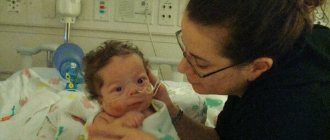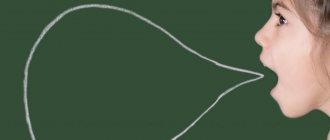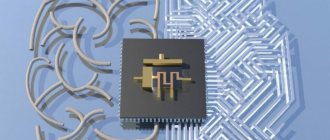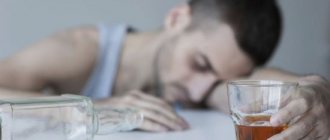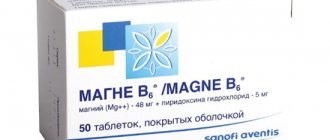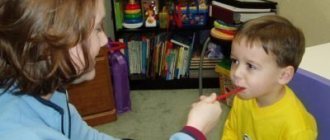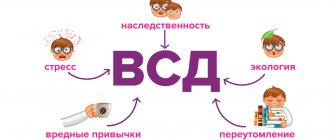Disorders of the urinary system associated with regulatory function are called neurogenic bladder. The problem appears due to pathological processes in the nerves and/or brain. A manifestation of the pathology is urination disorder. Doctors from the State Institute of Urology will help eliminate the symptoms of a neurogenic bladder and significantly improve the quality of life. The qualifications of our specialists allow us to accurately identify the problem and find effective and minimally invasive methods of treating it.
How does pathology manifest itself?
The disease proceeds according to a hyper-reflex or hypo-reflex scenario. In the first case, patients complain of frequent urges and difficult or ineffective intercourse. In the second group of patients, there is no urge to urinate, emptying the bladder spontaneously, which causes serious discomfort in life.
Typical manifestations of the disease are as follows:
- the need to urinate many times during the day;
- false urges and difficulty urinating;
- urinary incontinence;
- delayed micturition.
Treatment of cystitis in a child
Bladder inflammation is treated using several methods. The first step is to provide the child with complete rest and bed rest for 4-7 days. After diagnosis and identification of the causative agent of the disease, the doctor will prescribe a certain group of antibiotics and painkillers that should be taken for a week.
How to treat cystitis in children:
- taking antibiotics that kill pathogenic microflora and prevent its reproduction;
- taking painkillers that remove pain, severe cramps and restore urination;
- drinking plenty of water, which helps flush out bacteria from the bladder cavity;
- proper nutrition, which will not irritate the mucous membrane, and will also help restore the walls of the bladder;
- compliance with bed rest, since rest is important for the body to actively fight infection.
In advanced cases, cystitis can be treated with special procedures (balneotherapy, mud therapy, electrophoresis, magnetic therapy, microwave), which restore the functionality of the urinary system and contribute to the rapid destruction of the infection.
The use of folk recipes as a treatment for cystitis is also considered useful in the fight against inflammation. Moreover, it is recommended to take decoctions internally and externally in the form of baths and compresses. You can use any medicinal herb for treatment - chamomile, St. John's wort, plantain.
Key reasons
Symptoms of bladder dysfunction can occur in both sexes. The etiology has not been clearly established; doctors point to the following provoking factors:
- functional disorders in the functioning of the brain and/or spinal cord after injury or surgery;
- nerve dysfunction due to stress;
- consequences of stroke;
- organic damage to the nerves of the bladder;
- disruption of innervation caused by infectious and inflammatory pathologies;
- psychosomatics;
- oncological formations affecting the nervous system.
Symptoms of neurogenic bladder in women may manifest themselves during menopause.
Many patients consider their problem shameful and rarely see a doctor. It should be understood that this pathology is very common and requires medical attention. At the State Institute of Urology you will find competent specialists who will help eliminate the problem and nullify the clinical manifestations of the disease. You should not rely on folk recipes or look for treatment options on forums; only an individual medical strategy will help you return to normal life.
Why does neurogenic bladder dysfunction occur?
Neurogenic bladder (NUB) rarely acts as an independent pathology. This is a broad syndrome that occurs with various diseases, ranging from stress to disorders of sphincter innervation.
Common causes of neurogenic bladder development:
- brain diseases;
- spinal cord pathologies;
- congenital defects in the development of the spine, spinal cord, and urinary system organs;
- diseases of the nervous system.
All this gradually leads to degradation of the walls and wrinkling of the organ. Separately, as causes of NMP, it is worth noting a decrease in its elasticity or a reduction in volume. The following pathologies can lead to this:
- excess calcium and lack of elastin in the body;
- endoscopic operations or diagnosis using a cystoscope, which leads to damage to the urinary tract;
- pyelonephritis;
- pelvic bone fractures;
- tumors of the pelvic organs;
- cystitis;
- BPH;
- open surgery on the genitourinary system.
Brain diseases
In case of traumatic or inflammatory damage to the brain, the connection between the cortical centers of the urinary system is severed. Main causes of pathology:
- Parkinson's disease;
- hemorrhagic or ischemic stroke;
- traumatic brain injuries;
- tumors in the brain;
- encephalitis;
- meningoencephalitis;
- disseminated encephalomyelitis;
- Alzheimer's disease;
- cerebral palsy;
- agenesis and dysgenesis of the coccyx.
Spinal cord pathologies
Neurogenic bladder caused by pathologies of the spinal cord is called spinal bladder. The main reasons for the development of this disease:
- intervertebral hernia;
- back injuries;
- osteochondrosis of the thoracic or lumbar region;
- spondyloarthrosis.
Nervous system dysfunctions
Most of the causes of urinary tract disorders fall into the category of disorders of the nervous system, since the process of urination is controlled by many nerves. Thus, dysfunction can be caused by:
- polyradiculoneuritis;
- polyneuropathy;
- multiple sclerosis;
- tuberculous lesions of the peripheral or central nervous system;
- chronic stress;
- severe nervous shock;
- periodic artificial retention of urination;
- chronic alcoholism.
Congenital pathologies
The causes of NMP from the congenital category are typical for children. In this case, the pathology manifests itself in childhood. Main reasons:
- traumatization of the child during childbirth;
- congenital defects in the development of the central nervous system, urinary organs or spine.
Diagnostics
Since the disease is multisystem in nature, diagnosis begins with a detailed history. If a neurogenic etiology is suspected, the doctor will recommend keeping a special diary. In it, patients record the frequency and time of urination, and the approximate volume of urine. Accurate documentation allows you to objectively assess the scale of the problem.
In addition, the specialist will prescribe hardware and laboratory diagnostics:
- pelvic radiography;
- excretory urography;
- Ultrasound of the kidneys;
- Ultrasound of the bladder;
- Ultrasound of the ureters;
- bacteriological examination of urine;
- serum creatinine.
Diagnostic program for neurogenic bladder syndrome
Diagnostic measures for neurogenic dysfunction involve collecting a clinical, life and hereditary history, and the birth history of a woman when the syndrome occurs in young children.
The main laboratory tests are:
- Urine examination (typical samples, sterility analysis, biochemical parameters).
- A general and detailed biochemical blood test (the indicators of leukocytes, bilirubin, creatinine, urea are important).
- Feces for dysbacteriosis and occult blood for differential diagnosis.
Mandatory instrumental examination includes excretory urography with a contrast agent, cystoscopy, ultrasound of the kidneys and abdominal organs, and urodynamic studies as indicated.
, an MRI or CT scan may be indicated .
For neuropathies and secondary dysfunction, consultations with a neurologist, cardiologist, urologist, nephrologist .
Note! NMP syndrome is differentiated from prostatic hypertrophy in men, urinary incontinence in children and the elderly of a somatic, psychogenic nature.
If the true cause of development cannot be identified, then they speak of idiopathic NMP syndrome.
ethnoscience
Neurogenic bladder is a serious pathological disorder that must be treated in a hospital setting. It is impossible to get rid of dysfunction using traditional methods. But it is possible to ease its course. Traditional medicine actively uses herbal medicine - decoctions and infusions of herbs with a calming effect. Herbal teas made from chamomile, mint, and linden will help relieve spasms and discomfort in the bladder.
To calm the nervous system and relieve increased excitability, it is useful to use infusions of lemon balm, peppermint, and valerian. In cases of pathology complicated by urinary incontinence, an infusion of dry seeds and dill helps. But before using folk remedies, it is important to consult with your doctor.
Neurogenic bladder and dysfunction
Neurogenic dysfunction of the bladder is revealed in the involuntary contraction of the muscles of the walls of the organ and the squeezing out of urine when the bladder is not yet full and, conversely, weak urine output when the bladder is full, literally in drops. Externally, the pathology manifests itself:
- uncontrolled leakage of small portions of urine with an almost empty bladder,
- frequent false urge to go to the toilet,
- weak jet pressure,
- not complete liberation.
By the age of three, the parts of the brain in the head and spinal cord responsible for the reflexivity of filling the bladder and the schedule of daytime and nighttime urination are fully formed in the child. It is normal for a child to sleep without getting up to go to the toilet, and in the morning he empties his bladder throughout the night. During the waking period, he should pee 4 to 6 times.
If in the morning there is a wet spot on the bed or the mother knows that little time has passed since the last visit to the toilet, and her panties are a little wet, this is one of the symptoms of neurogenic dysfunction.
Another form of the disease is expressed in the inability to urinate when the bladder is full.
Neurogenic bladder dysfunction in children is classified according to severity and has 3 forms. Each has its own syndromes.
| Form of neurogenic dysfunction | Syndromes |
| Lightweight | enuresis, frequent urination during the day, stress incontinence |
| Medium-heavy | unstable bladder, lazy |
| Heavy | urofacial, detrusor-sphincter dyssenergy |
In the most severe form of dysfunction, the child's micturition reflex does not occur when the bladder is full and even when the bladder is full.
Experts distinguish between 3 types of neurogenic bladder dysfunction.
- Hypotonia is muscle weakness. A hyporeflex bladder is characterized by weak muscle contraction when excreting urine. Some of the urine remains and the bladder overflows. As a result, involuntary urine discharge occurs.
- Hyperreflex, on the contrary, often contracts during the accumulation of urine, when urine has not yet filled it and frequent excretion of urine occurs in small portions.
- With the areflex type of dysfunction, the muscles, on the contrary, do not respond to filling. As a result, the amount of urine collected is significantly higher than the age norm. The central nervous system does not control urinary function.
Neurogenic dysfunction appears in children aged 1–4 years. Symptoms of the disease are:
- frequent urge to urinate – 10 or more, or rare up to 3 times,
- a small amount of urine coming out
- discomfort in the lower abdomen,
- strong muscle tension for complete emptying,
- leakage of urine when the body position changes from horizontal to vertical.
In children, additional symptoms can be observed in the form of viral kidney diseases, pathological constipation, and frequent inflammation of the genitourinary system.

